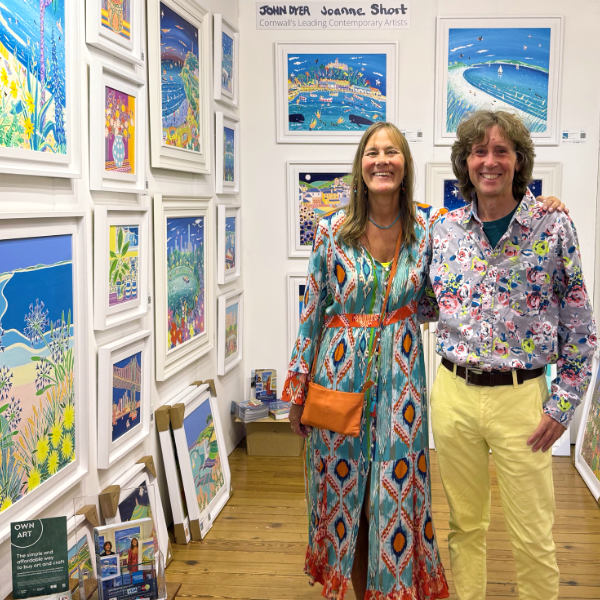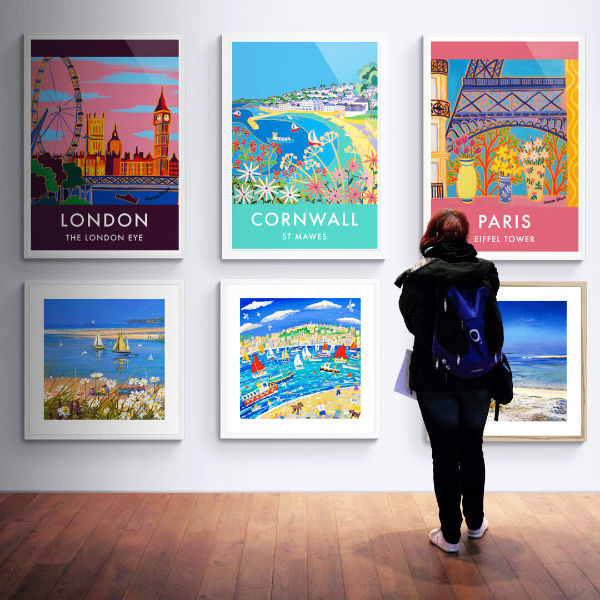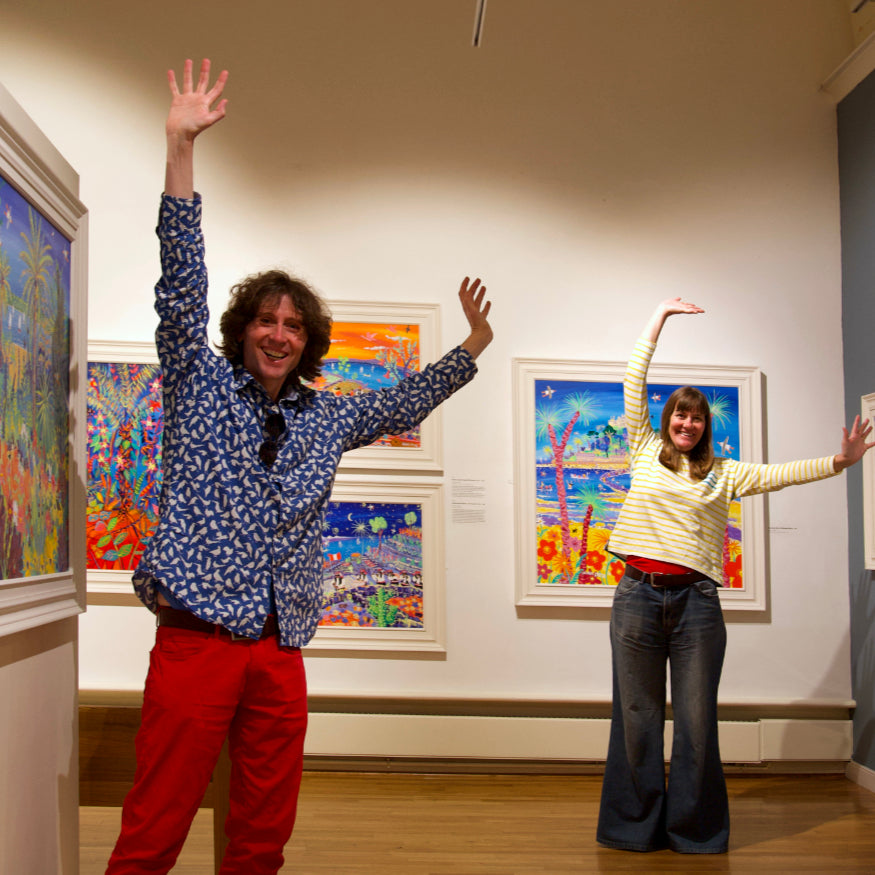Invest in British Art from Cornwall's Leading Artists | Free Worldwide Delivery
JOHN DYER
Original Paintings
New paintings available to buy online now by Cornwall's best loved artist.
JOANNE SHORT
Original Oil Paintings
New paintings available to buy online now by Cornwall's acclaimed colourist painter.
TED DYER
Original Oil Paintings
New paintings available to buy online by Cornwall's best known impressionist artist.
All Original Paintings
View all of the new original paintings that we have available to buy online now in our online gallery.
The ones you missed
View all of the recently sold original paintings by our Cornish artists John Dyer, Ted Dyer and Joanne Short.
Cornwall Art Prints
Museum-quality prints. Framed, Unframed, Signed & Wall Art Posters
September 5th - 7th 2025
Untitled Art Fair Chelsea, London
We will be exhibiting at the prestigious Untitled Art Fair, in Chelsea Old Town Hall.
June 6th - 8th 2025
St Ives Summer Exhibition 2025
New paintings by John Dyer & Joanne Short in the historic Porthmeor Studios in St Ives.
Christmas Exhibition 2024
A beautiful collection of new paintings by John Dyer & Joanne Short in the historic Porthmeor Studios in St Ives.
Explore our Previous Exhibitions
Enjoy exploring our previous exhibitions online and discover extraordinary paintings you can own today.
Press Coverage and Testimonials
Art Collectors Club.
Enjoy 5% off your first order, regular offers, exclusive exhibition invitations and artist and gallery updates in our monthly email newsletter.
Edward Lear (1812–1888) is celebrated as a pioneering figure in the world of landscape painting and as a beloved writer of nonsense verse. Born in Holloway, London, Lear was the youngest of 21 children in a modest family. Despite facing financial difficulties and health challenges, including epilepsy and poor eyesight, Lear's extraordinary talent and creativity propelled him to prominence in the visual and literary arts.
Lear began his artistic career as an ornithological illustrator, producing detailed and scientifically accurate illustrations of birds for various publications. His work in this field, particularly his illustrations for John Gould's "The Birds of Europe," earned him early acclaim and provided a strong foundation for his later artistic endeavours. However, his passion for travel and landscape painting soon took precedence.
In the 1830s, Lear transitioned to landscape painting, inspired by his extensive travels across Europe and the Mediterranean. His journeys took him to Italy, Greece, Albania, Egypt, and the Indian subcontinent, among other destinations. These travels profoundly influenced his work, as he captured the diverse and picturesque landscapes with a distinctive blend of topographical accuracy and poetic sensibility.
Lear's landscape paintings and watercolours are characterized by their luminous quality, meticulous attention to detail, and evocative sense of place. His ability to convey the grandeur and tranquillity of nature made his works highly sought after by patrons and art lovers. Notable paintings include "Corfu from Ascension," "The Plains of Lombardy from Monte Generoso," and "Mount Athos and the Monastery of Stavroniketa," each showcasing his exceptional skill in capturing the beauty and essence of his surroundings.
In addition to his achievements in the visual arts, Lear is also celebrated for his contributions to literature, particularly his whimsical and imaginative nonsense verse. His most famous work, "A Book of Nonsense" (1846), features a collection of limericks and playful poems that have delighted generations of readers. His nonsense verse is marked by its inventive language, humour, and charm, exemplified in beloved poems such as "The Owl and the Pussycat" and "The Jumblies."
Lear's dual talents as a painter and poet earned him a unique place in the cultural landscape of the 19th century. His ability to traverse the visual and literary arts with such success is a testament to his remarkable creativity and versatility. Despite his struggles with health and personal hardships, Lear maintained a spirit of curiosity and joy that is reflected in his work.
Edward Lear passed away in 1888 in San Remo, Italy, leaving behind a rich legacy that continues to inspire and enchant. His landscapes remain admired for their beauty and precision, while his nonsense verse is a testament to his imaginative genius. Lear's work celebrates the natural world's wonders and the human imagination's boundless possibilities, making him a cherished figure in both the art and literary communities.
Explore our main art collections to find perfect original paintings, limited edition signed prints, open-edition prints, wall art prints and posters & artist designed gifts.
N.B. If you don’t see your confirmation email shortly, please check your spam or junk folder.
A stunning picture that was efficiently delivered to Amsterdam in a very short time frame.
From order to delivery the process was fast and efficient, especially as it was to the Netherlands.
Loved this case for my new iPhone 16 pro - it makes me smile and the vibrant colours are just gorgeous
Love it. So cheering on these dark days of winter. Thank you John.
I was looking for a print of st ives and came across John dyers work . I particularly like the colours and style of this piece , especially the fat seagulls . It’s complete fun in a frame and reminds us of happy days spent at the harbour
The print is fabulous, beautiful and my sister will love it. Thank you
Really like this picture as it brings brightness to our kitchen diner. We framed it with a white border and blue second border. Looks amazing
We love John’s pictures of France. We already have an original of Nice but bought this poster as it brings back so many wonderful memories.
Superb communication and attentiveness from gallery. The poster is of course wonderful.
Love this print - bright, sunny and makes one feel warm and happy!
Delivery was all easy and straightforward. Many thanks.
The print is even better in real life. It’s printed on beautiful quality paper which makes the colours really pop and the painting itself is simply charming. It brings so much joy to us. We love it! Thank you
A lovely art print bought as a memory of our holidays on the beautiful Isles of Scilly.
The frame is very well made and displays the art print beautifully. Ordering from John Dyer Gallery was simple and delivery swift. I would not hesitate to order from them again.
Thank you so much for the amazing customer service, and most beautiful painting of our favourite place
Absolutely beautiful painting. So thrilled with it. Completely amazing service: beautifully packaged, framed and safely delivered really quickly.
Lovely picture, bought 3 after our recent trip to Cornwall. Already thinking of getting more.
Have walked this coastal path from St Agnes to Chapel Porth and back countless time. I am now pleased that this fabulous print is the first thing I see every morning. Beautiful, happy colours. Nice frame. I’m now planning of ordering one of Mount’s Bay by same artist.




